If you live in an area that gets frost prune your lemon tree once per year in early spring. If you live in a frost free area, prune lemon trees in late winter or early spring. Pruning in spring will give you the chance to remove old or broken branches and increase the air flow before flowers and fruit set.
Key Takeaways
- Pruning is an essential task for keeping lemon trees healthy and productive.
- The best time to prune a lemon tree is in late winter or early spring, before new growth begins.
- The specific timing and methods of pruning may vary depending on the age of the tree, the climate, and the health of the tree.
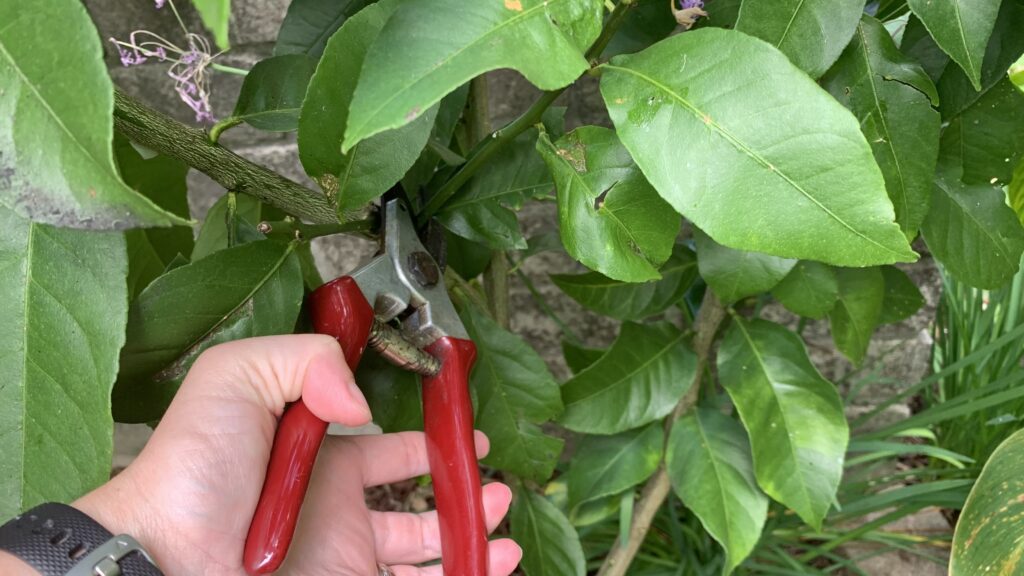
Top 6 reasons to prune your lemon tree in spring
Check out these top reasons why you should prune your lemon tree once per year in spring.
1. Remove dead and diseased wood
Pruning your lemon tree in spring is a good opportunity to remove any damaged, dead or diseased wood. When the spring weather warms up the tree will send out new shoots from these points. This will give you healthy new stems ready to produce fruit in the next year.
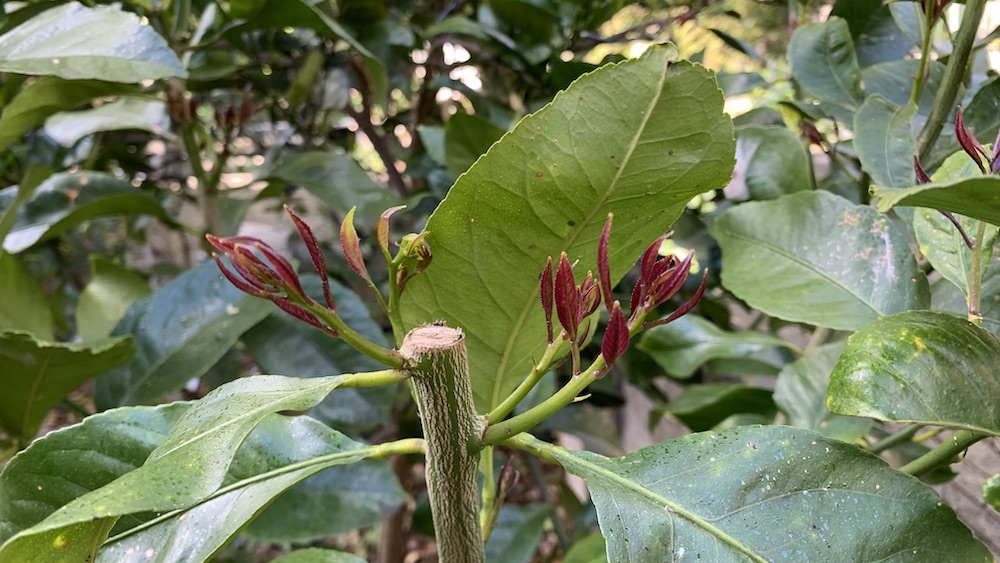
2. Reduce pests and diseases
Pruning lemon trees in spring will give you a chance to remove any branches that are pointing towards the ground. Branches that are low to the ground can be splashed with soil which can transfer pests and diseases.
Removing these branches before the warm spring and summer weather arrives will give your lemon tree the best chance of staying healthy.

3. Shape the plant to look great
Spring is a great time to maintain the look of your lemon tree. Prune off any branches that are outside of the shape you want. Most lemon trees look great pruned into a wine glass shape.
Remove any lower branches and keep the stems pointing up.

4. Get ready for a big crop in summer
Pruning well in spring is a great way to get your plant ready for a big crop in summer. The previous years growth will be ready to produce flowers and fruit and produce a great crop.
Avoid removing more than 20% of the canopy in any one year so you don’t remove all of the fruiting branches.

5. Avoid frost damage to new growth
Waiting until spring a good way to avoid frost damage on your tree. Once you prune the lemon tree it will send out new growth from these cut points. This new growth is easily damaged by frosts and can die back completely if the weather is too cold.
If you live in an area that is frost free you can go ahead and prune your lemon tree in late winter. Otherwise, it is safe to wait until spring when the weather starts to warm and the daylight hours increase.

5 Steps to prune your lemon tree in spring
For most areas it is important to prune your lemon tree in spring. Check out these easy steps to prune your tree for the biggest crop of fruit possible.
1. Remove limbs that are crossing others
It is important to look through your tree and remove any branches that are crossing over others. These can rub together in the wind making an entry point for pests and diseases.
Removing these branches that cross will allow more air flow between the branches and help to reduce the chances of mold or fungal growth.
Take out long branches that are crossing over, bent or broken instead.
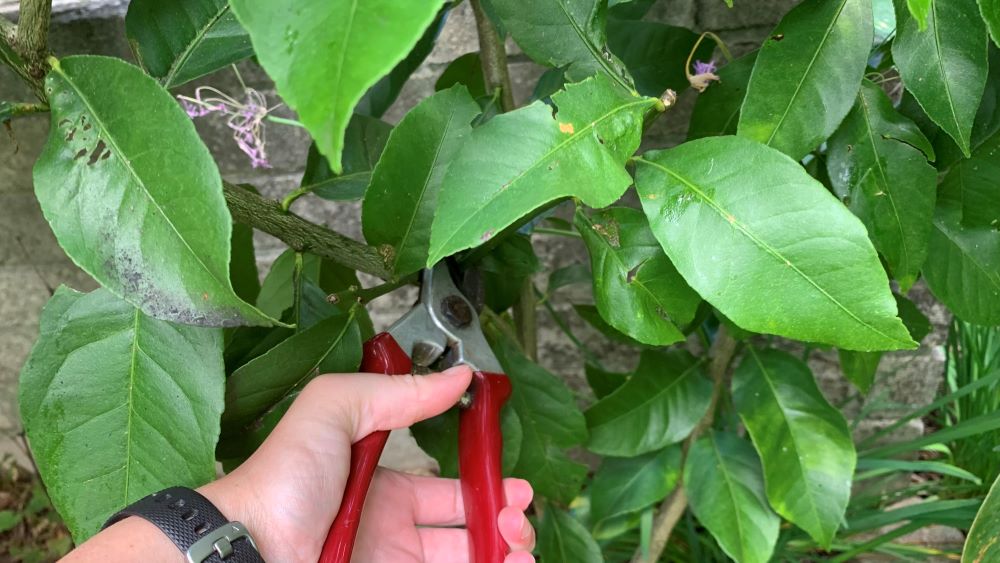
2. Shape your tree
Stand back and decide how big you want your lemon tree. You can then cut the branches down to within 6 inches of this level.

3. Remove no more than 20% of the canopy
Remove around 20% of the branches above the size and shape of the tree you are aiming for. Leaving 80% of the branches will allow more fruit to form and will not stress the tree.
Removing too many leaves will reduce the plant’s ability to photosynthesize and will therefore reduce your next crop.
4. Remove lower branches
Prune any branches lower down on your lemon tree that are pointing towards the ground. Branches that touch the ground can be more likely to pick up pests and diseases from the soil.
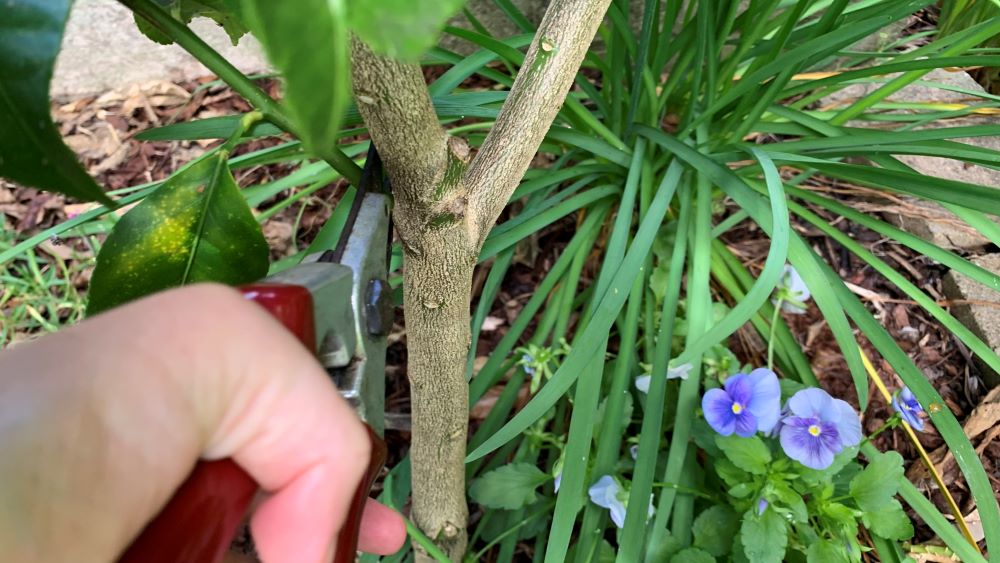
5. Shape your tree like a wine glass
Aim for a wine glass shape to keep your tree looking great and producing fruit. Prune any branches that are poking out or leaning over. This will help to keep the plant stable and prevent it from falling in strong winds.
3 Times it is important to prune your lemon tree (even if it is not spring)
While spring is the best time to prune your lemon tree there are other times that it is ok to give it a light prune.
1. When branches are broken
If a branch breaks on your lemon tree in high wind or due to an impact it is important to prune it off. Any damaged branches can be an entry point for pest and disease.
2. When branches are rubbing against each other
If you check your lemon tree throughout the year and notice that branches are touching and rubbing against each other it is best to prune. Just remove the branch that is crossing to avoid rub marks on your other healthy stems.
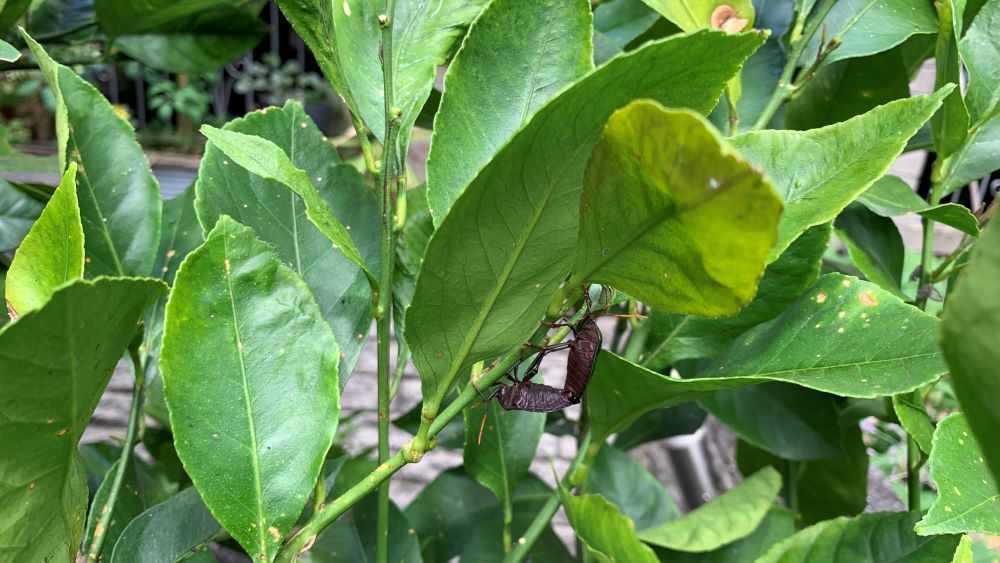
3. When branches are touching the ground
If you ever notice that your lemon tree branches have bent or are heading towards the ground, it is best to trim them off. Soil can splash on the leaves transferring disease to your plant.
When to Prune a Lemon Tree | Summary
Pruning your lemon tree in spring is ideal because it will help you to set the tree up for a summer season of producing fruit. Take the time to shape your tree and remove around 20% of the previous year’s growth to freshen it up for the warm weather in spring. You will soon get loads of flowers and fruit for your efforts.
Happy growing.
Frequently Asked Questions
What is the best time of year to prune a lemon tree?
The best time to prune a lemon tree is in late winter or early spring, after the harvest and before the heat of summer arrives. Lemon trees are evergreen fruit-producing trees that require less pruning than deciduous fruit trees. Pruning should be done when the tree is dormant, and the risk of frost has passed.
How do I know if my lemon tree needs pruning?
You should prune your lemon tree if it has dead, diseased, or damaged branches. Also, if the tree is overgrown and has not been pruned in a while, it may need to be pruned to maintain its shape and size. Additionally, if the tree is not producing fruit, pruning can help stimulate growth.
What are the benefits of pruning a lemon tree?
Pruning a lemon tree can help increase fruit production, improve the tree’s overall health, and maintain its shape and size. It can also help remove dead, diseased, or damaged branches, which can prevent the spread of disease and pests.
Can I prune my lemon tree in the summer?
It is not recommended to prune a lemon tree in the summer. Pruning during this time can cause stress to the tree and make it vulnerable to pests and diseases. It is best to prune the tree during the dormant season, which is in late winter or early spring.
What is the proper way to prune a lemon tree?
The proper way to prune a lemon tree is to use sharp, clean pruning shears or saws. Cut off any dead, diseased, or damaged branches, and thin out any crowded or crossing branches. Make sure to cut at a 45-degree angle and avoid leaving stubs. Additionally, prune the tree to maintain its shape and size.
How often should I prune my lemon tree?
You should prune your lemon tree once a year, during the dormant season. However, if the tree has dead, diseased, or damaged branches, you should prune them as soon as possible. Additionally, if the tree is overgrown and needs maintenance, you can prune it more frequently.
I am an accredited practicing dietitian, experienced gardener and a dedicated cook. I love writing and sharing my experience so you can learn from my successes and mistakes.
